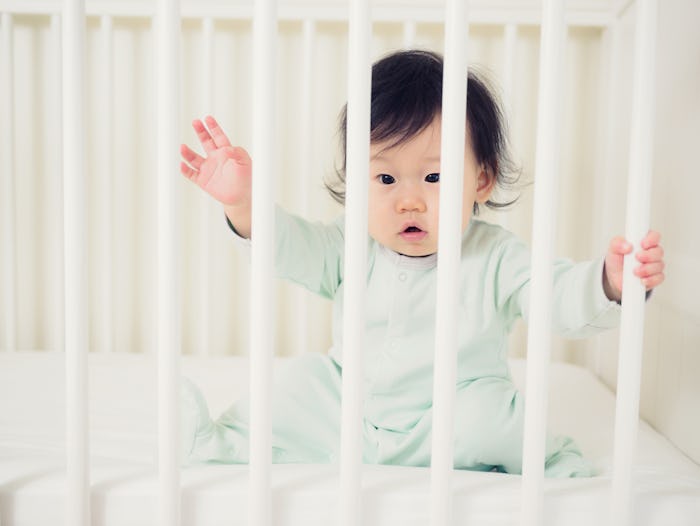Life

9 Things To Keep In Mind When It Comes To Cribs
When it's time to furnish your baby's room, the crib is likely one of your major purchases. It's an important and sometimes expensive investment. With this in mind, you can use the crib facts you should always be aware of to to guide your decision.
As with everything else related to your baby, safety is key. Everything from the way you construct the crib to its placement in the room can affect your little one. For instance, did you know that it's wise to keep your crib away from windows, especially if the drapes are within your baby's reach?
It's worth noting that crib safety standards have improved dramatically in recent years. So although you may be tempted to use an heirloom or secondhand crib, it's crucial to make sure it's up to standard. Because features from older cribs may present a strangulation or suffocation hazard, you may want to consider a newer model.
But you don't just need to be aware the type of crib you buy. The way in which you outfit your baby's crib may also affect her safety. In general, it's smart to use a mattress and bedding that fit tightly. Keeping loose toys and blankets our of the crib is also a smart move. Although this may sound like a lot to remember at once, reading through this list will help you master the basics of crib safety.
1Keep Toys & Pillows Out
Sure, those stuffed teddy bears look adorable beside your little one. But they're better to enjoy under supervision. According to the American Academy of Pediatrics, comforters, pillows,and soft toys should be removed from your baby's crib as they may present a suffocation hazard.
2Place Crib Away From Windows
Even where you place the crib in the room can affect your baby's safety. As explained by Parenting, it's a good idea to keep your baby's crib away from windows, because the blinds or cords could present a strangulation hazard.
3Assemble Crib Correctly
If you're like me, any furniture assembly project ends up with a handful of extra parts (as well as a few missing ones). Although an incorrectly built desk may only put your computer in danger, a poorly built crib may harm your baby. It's crucial to make sure your baby's crib is correctly and soundly built.
4Only Use Crib Sheets
Like everything else that surrounds your sleeping baby, you want those crib sheets to stay in place. According to Consumer Reports, tightly fitted crib sheets are a wise investment. Anything loose could pose a potential suffocation hazard.
5Make Sure The Mattress Fits Tightly
Likewise, the mattress itself should be budge-proof. According to the United States Consumer Product Safety Commission (CPSC), the crib mattress should fit tightly so your baby can't get caught between the crib and the mattress. (Who knew there would be so many safety regulations for a sleeping space?)
6Beware Of Cutouts
Some vintage cribs have headboards or footboards with elaborate cutouts. Although these may be beautiful, a baby's head could get trapped in the cutout, according to Kids Health. In these cases, a plainer crib may be a better choice.
7Buy New
Cribs are quite a major purchase for new parents, but going secondhand can present its own dangers. As noted in What To Expect, the CPSC made made strict guidelines for crib safety in 2011. Older cribs may not meet these new standards.
8Check The Paint
Vintage cribs may be better used as a decorative piece only. As further noted in What To Expect, older cribs also present the potential for lead paint, which can be hazardous to babies. Newer cribs avoid this potential problem.
9Avoid Drop-Side Cribs
This style of crib was popular for years. However, the CPSC opted to ban drop-side cribs in 2011, due to their increased risk for suffocation and strangulation. Although the moveable side may be helpful for parents, it's too risky for babies.